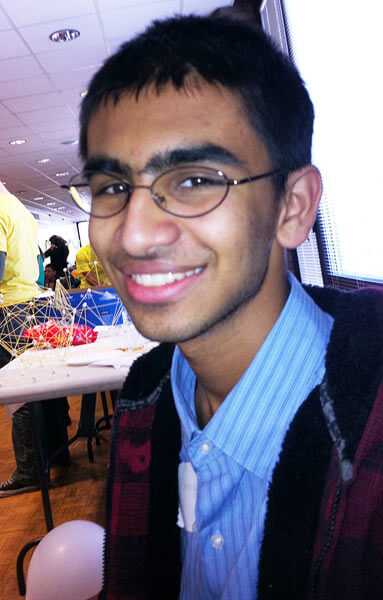By Joe Anuta
Bhargava Chitti is a 17-year-old Flushing student whose cancer research on reducing the sometimes debilitating side effects of radiation therapy has landed him a spot in the semifinals of the 2012 Intel Science Talent Search.
The annual competition is held to find the brightest budding scientific minds across the country.
Chitti has conducted his research over his sophomore, junior and senior years at Bronx High School of Science, but the inspiration for his project started long before that.
“My father and two of my uncles are both involved in radiation oncology,” he said. “Since I was a little kid, I remember my father telling me how harmful the radiation was that he had to use to treat patients.”
Radiation therapy is used to shrink cancerous tumors by damaging the offending cells’ DNA, thus rendering it unable to reproduce, according to the National Cancer Institute.
But radiation cannot be delivered on a cell-by-cell basis, which means there is always collateral damage.
Radiation therapy harms nearby healthy cells in the process, which can permanently damage parts of a patient’s body and cause a whole host of side effects like fatigue or the Hollywood symbol for the disease: hair loss.
“Hearing how much the patients suffered from the treatment made me want to do something,” Chitti said. “It seems wrong that something that is designed to help people to get better can cause them so much damage as a side effect.”
So Chitti began looking for the disease’s Achilles’ Heel.
A tumor grows by splitting its cells into two. Then those two cells divide again and the process repeats itself as the tumor takes over more and more of the body.
But the same thing that allows the cancer to grow is what also makes it vulnerable, Chitti said.
There is a certain cell that sustains the tumor, and it is most easily harmed when it is in the process of dividing. So Chitti developed a math equation that could predict when that cell, in a metaphorical sense, let down its guard.
“The cancer is weakest when this one type of cell is dividing,” he said. “So by attacking it then, we can do more damage and optimize treatment.”
Chitti mapped the divisions of this one type of cell and put it into a spreadsheet. By combining those numbers with other observations about the tumor, he was able to come up with an accurate model.
Eventually, he checked his equation against an actual case of cancer and then extrapolated it so he could apply it more broadly.
“It took a while to go through this process of forming equations,” he said. “But to generalize it you need to go beyond, and it requires a lot of thinking.”
The young researcher has applied to colleges across the country, but has not made up his mind where he wants to go. One thing he does know is that eventually he would like to attend medical school.
“I want to become a doctor and be involved in, not just coming up with cures, but also interacting with patients and showing them individual attention and care,” he said.
Chitti already volunteers at New York Hospital Queens in Flushing.
He completed his research with guidance and advise from his research mentor, Christopher Lange.
If Chitti moves on to the finals, he will be the recipient of a scholarship ranging from $7,500 to $100,000, depending on how he places.
The finalists were set to be announced Jan. 25.
Reach reporter Joe Anuta by e-mail at januta@cnglocal.com or by phone at 718-260-4566.



































